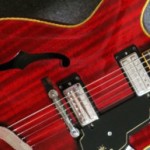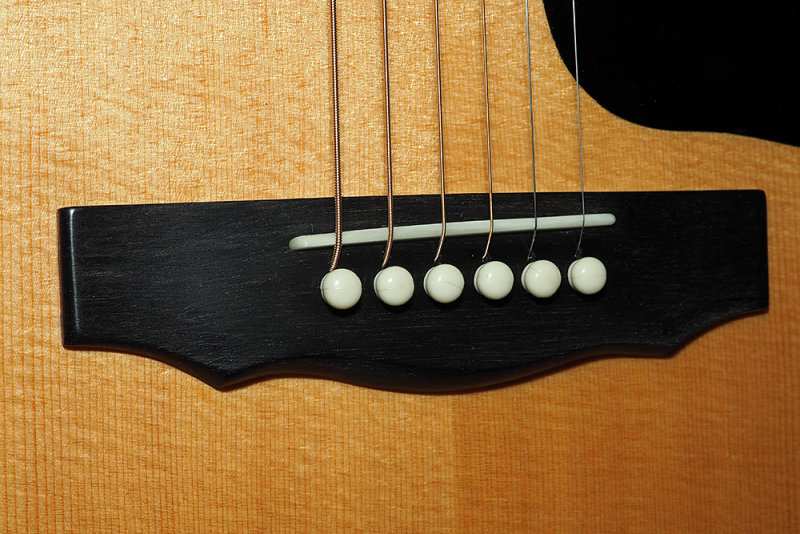Here to introduce myself to LTG. I’m a music mastering engineer from New York, now living and working in Monterrey, Mexico, as lead designer of the music technology program at Tecnologico de Monterrey.
I am a lifelong player (guitar, clarinet) who has been enjoying this forum immensely. Now I'm looking for advice about how to proceed with a 1978 Guild F212XL. This guitar is a huge change for me, as most of my experience has been with a Martin D12-35 which I bought new in 1968. I wanted to know what Guild is all about! I love the size, clarity and balance of the sound. Super excited to finally have a big Guild.
Right now it’s wearing D’Addario Light EJ38 Bronze, tuned down a half step. The immediate problems are buzzing in low E and a cracked bridge. Photos are attached (I hope). The low E buzzes with medium fingerpicking with capo on 2nd fret. Would be nice to fix that.
Without capo, 1st fret low E measures 2/64, and high E just under 2/64.
12th fret low E is 8/64, and high E 6/64.
With G7th capo at 1st fret, low E at 2nd fret is 2/64, and high E under 2/64.
12th fret, low E is 8/64 and high E is 5/64.
I have the truss rod wrench, though I have no experience using it. Despite the bridge crack, this lovely F212XL is holding pitch nicely (tuned Eb-Eb).
In Monterrey, Mx, I have been unable to find a local luthier expert in steel string acoustic guitars. This is an electric guitar town — that or nylon classical. To visit a luthier might require a physical trip to South Texas. While international shipping makes me nervous, the easiest trip would be to Laredo, TX (3-4 hours by car).
The photos show some of this stuff.
Pleasure to be here. Thanks in advance for your thoughts.
I am a lifelong player (guitar, clarinet) who has been enjoying this forum immensely. Now I'm looking for advice about how to proceed with a 1978 Guild F212XL. This guitar is a huge change for me, as most of my experience has been with a Martin D12-35 which I bought new in 1968. I wanted to know what Guild is all about! I love the size, clarity and balance of the sound. Super excited to finally have a big Guild.
Right now it’s wearing D’Addario Light EJ38 Bronze, tuned down a half step. The immediate problems are buzzing in low E and a cracked bridge. Photos are attached (I hope). The low E buzzes with medium fingerpicking with capo on 2nd fret. Would be nice to fix that.
Without capo, 1st fret low E measures 2/64, and high E just under 2/64.
12th fret low E is 8/64, and high E 6/64.
With G7th capo at 1st fret, low E at 2nd fret is 2/64, and high E under 2/64.
12th fret, low E is 8/64 and high E is 5/64.
I have the truss rod wrench, though I have no experience using it. Despite the bridge crack, this lovely F212XL is holding pitch nicely (tuned Eb-Eb).
In Monterrey, Mx, I have been unable to find a local luthier expert in steel string acoustic guitars. This is an electric guitar town — that or nylon classical. To visit a luthier might require a physical trip to South Texas. While international shipping makes me nervous, the easiest trip would be to Laredo, TX (3-4 hours by car).
The photos show some of this stuff.
Pleasure to be here. Thanks in advance for your thoughts.
Attachments
-
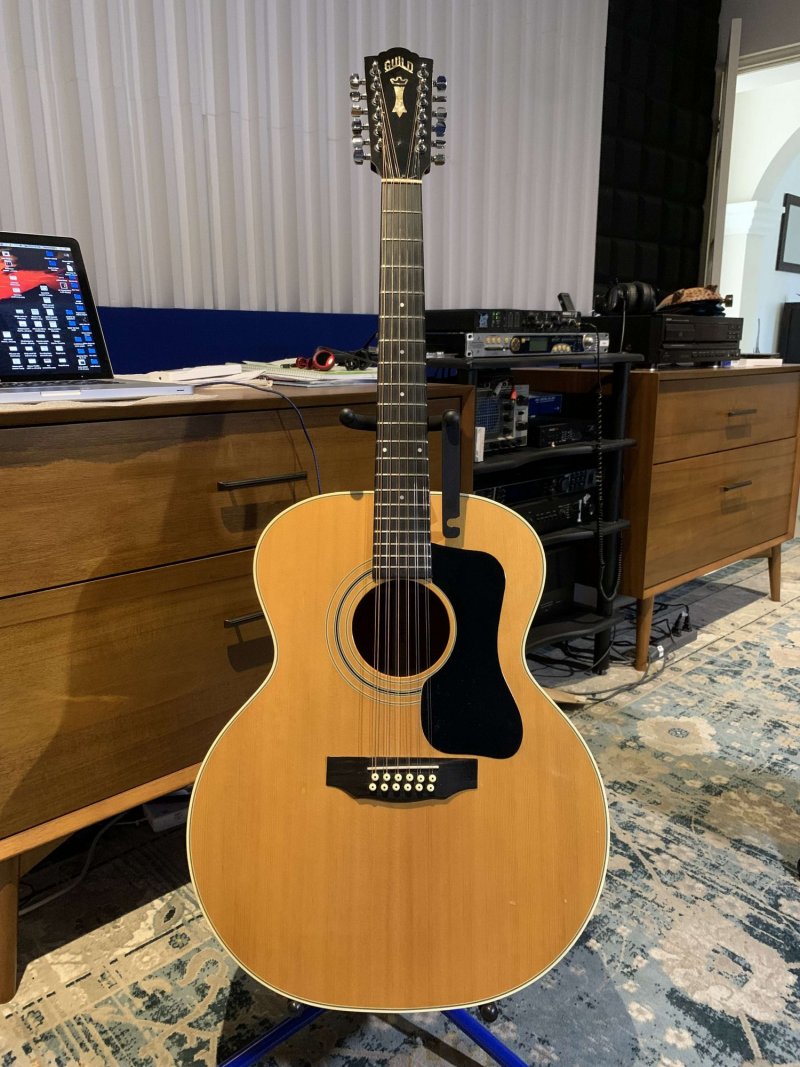 01 Full front-x4963.jpg520.1 KB · Views: 256
01 Full front-x4963.jpg520.1 KB · Views: 256 -
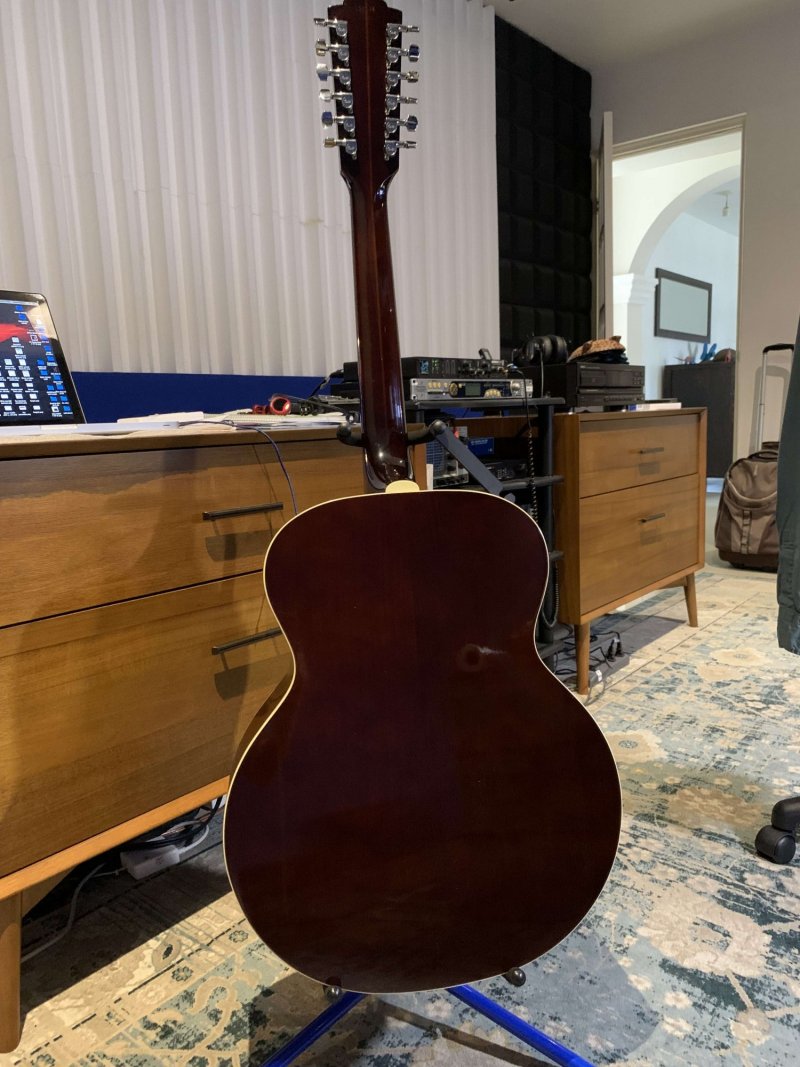 03 Back full-x4965.jpg448.7 KB · Views: 177
03 Back full-x4965.jpg448.7 KB · Views: 177 -
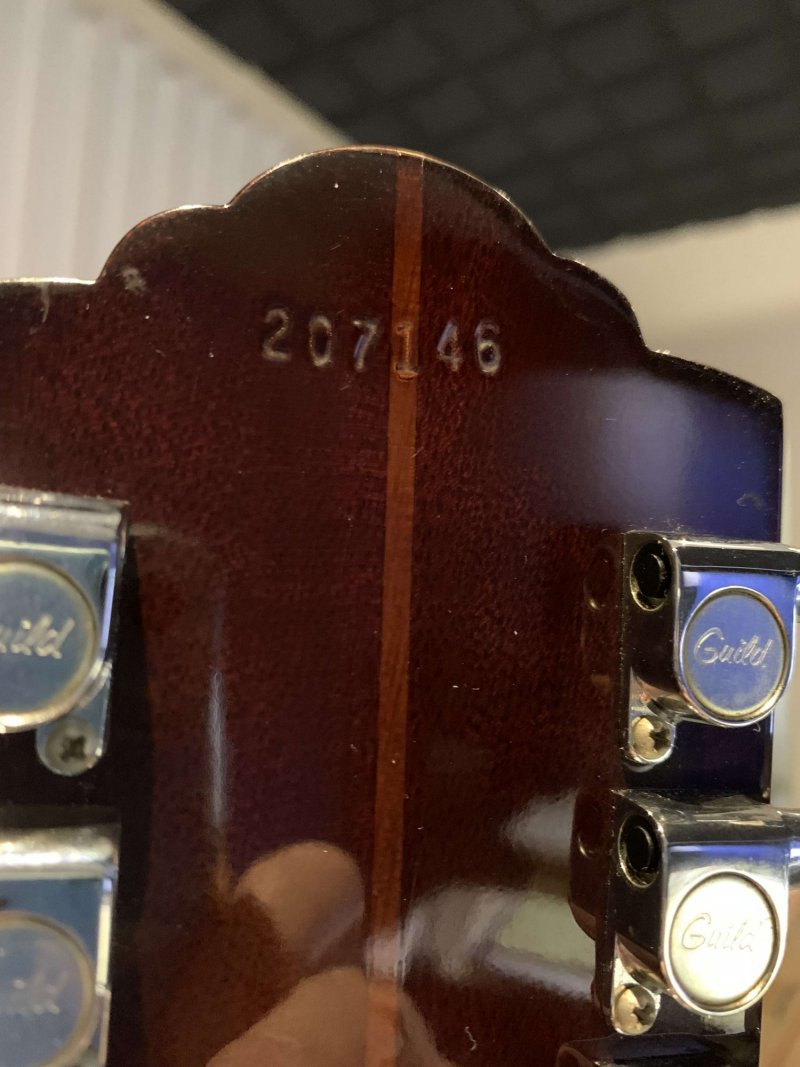 06 Serial number-x4968.jpg376.5 KB · Views: 172
06 Serial number-x4968.jpg376.5 KB · Views: 172 -
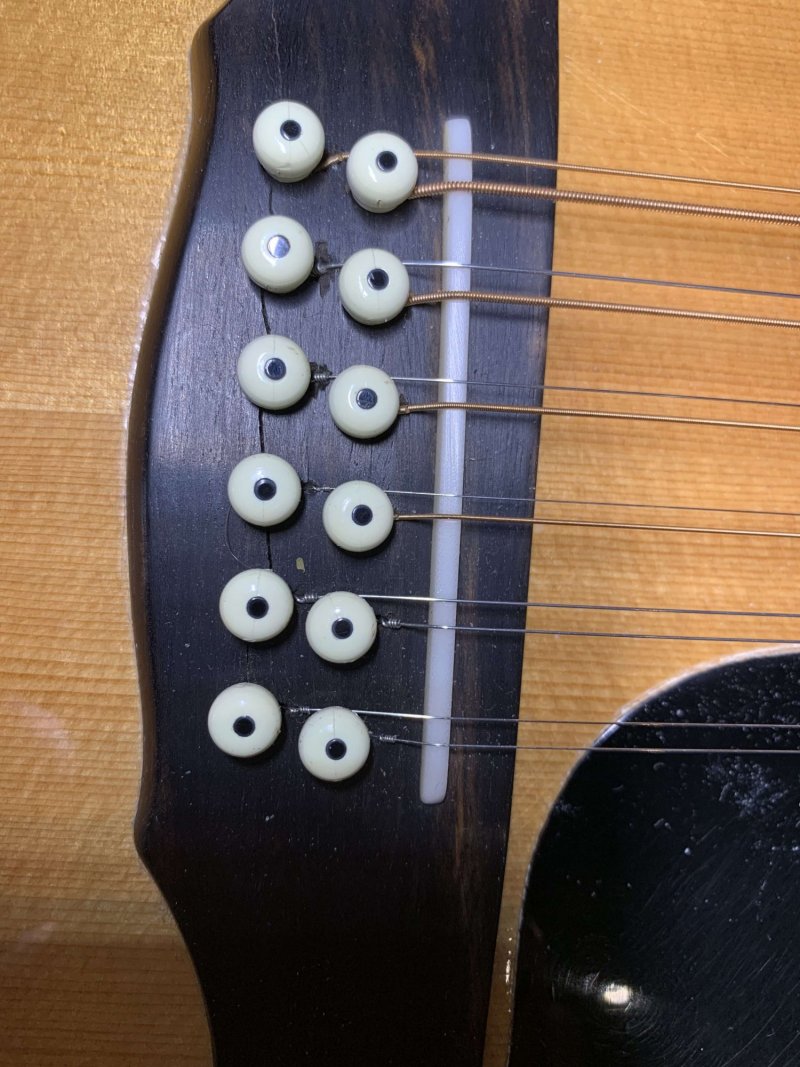 07 Bridge-Center-x4958.jpg485.7 KB · Views: 174
07 Bridge-Center-x4958.jpg485.7 KB · Views: 174 -
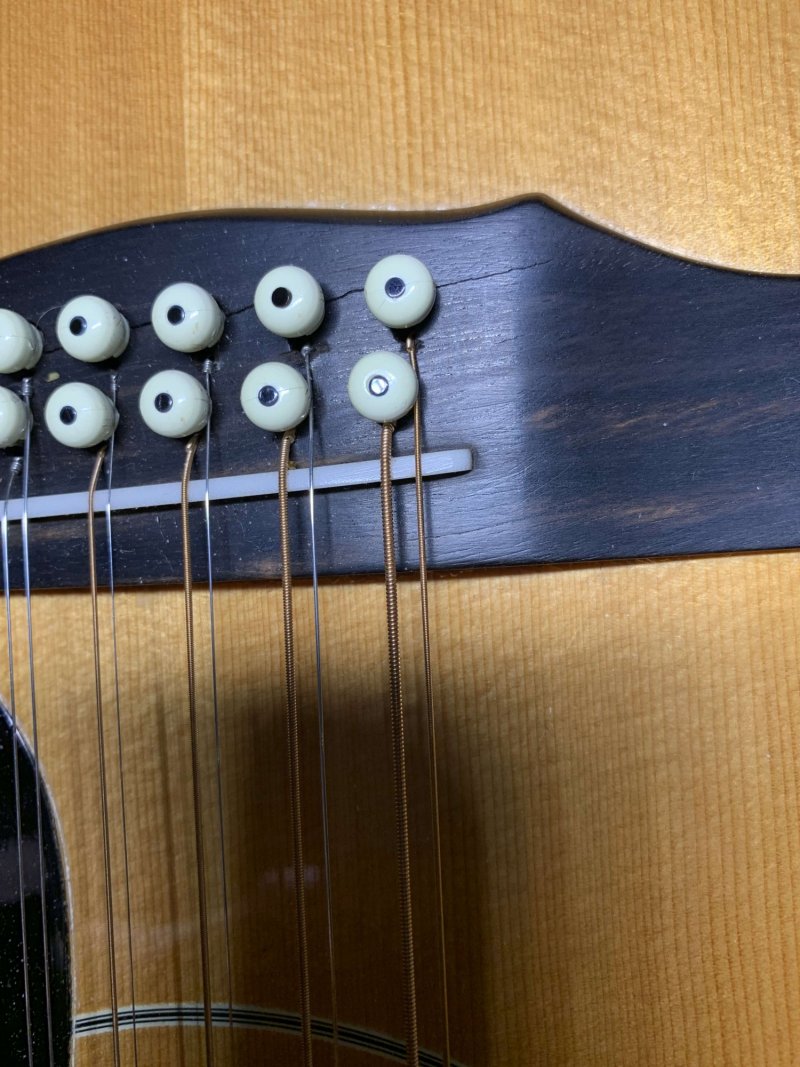 08 Bridge-Low side-x4960.jpg509.8 KB · Views: 171
08 Bridge-Low side-x4960.jpg509.8 KB · Views: 171 -
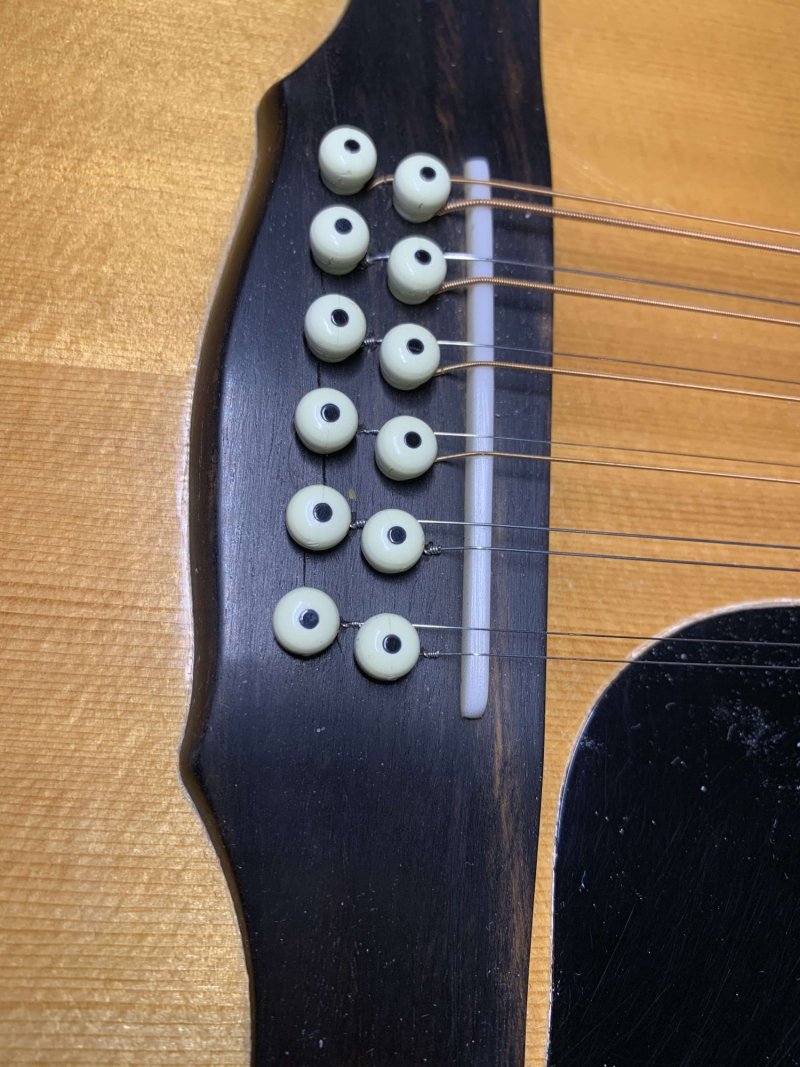 09 Bridge-High side-x4959.jpg488.4 KB · Views: 188
09 Bridge-High side-x4959.jpg488.4 KB · Views: 188 -
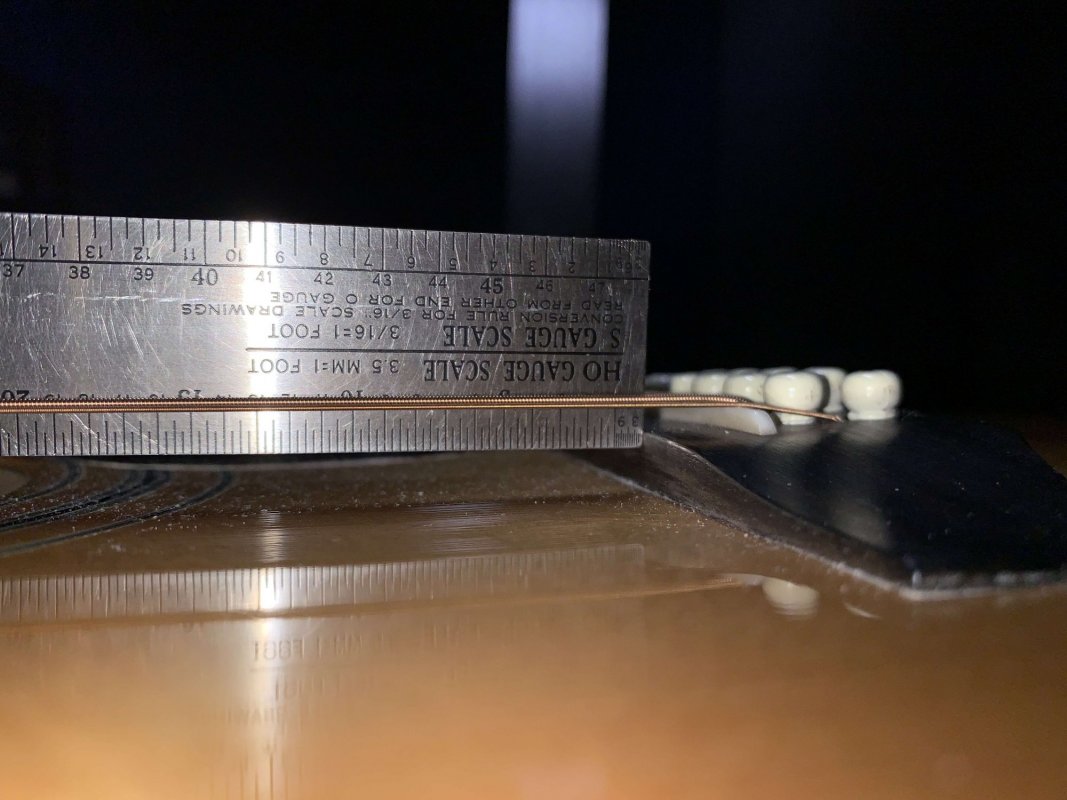 11 Ruler at bridge-Close-x4987.jpg378 KB · Views: 193
11 Ruler at bridge-Close-x4987.jpg378 KB · Views: 193
